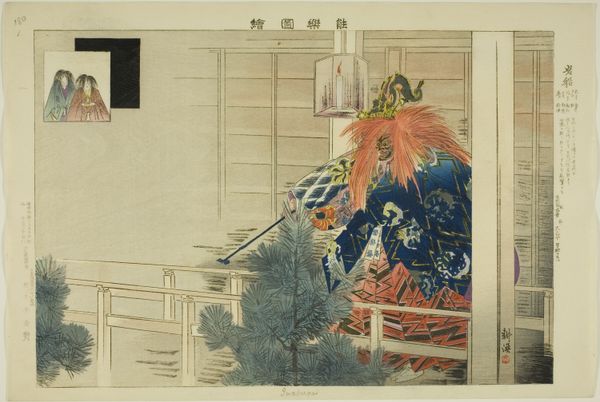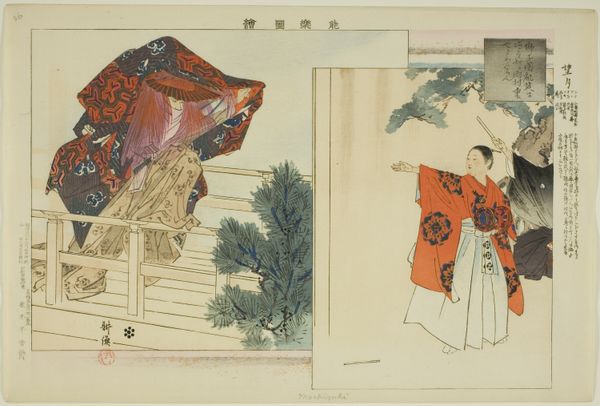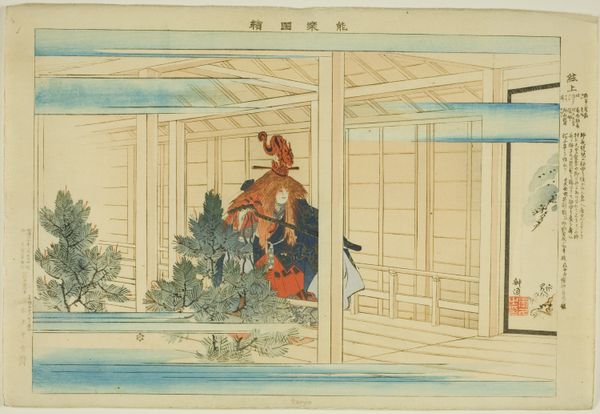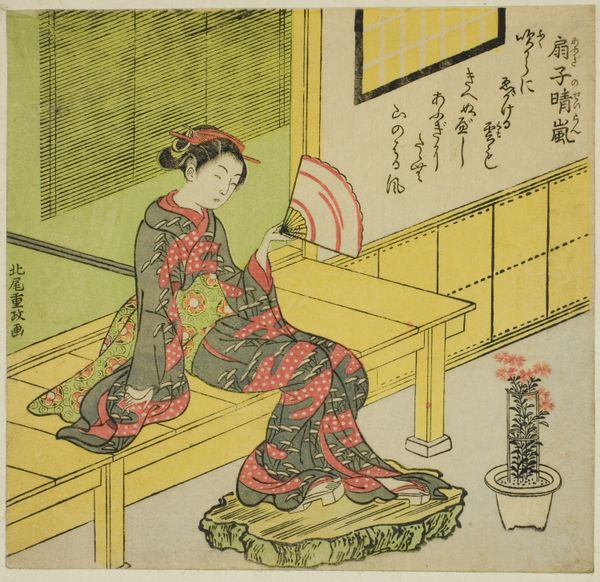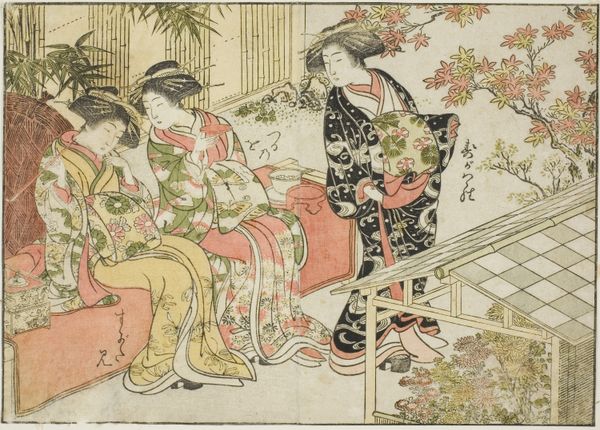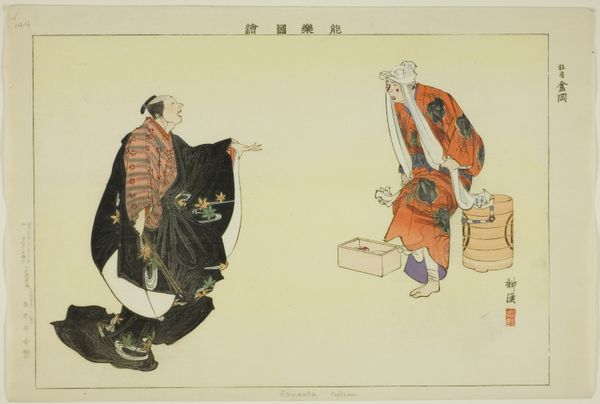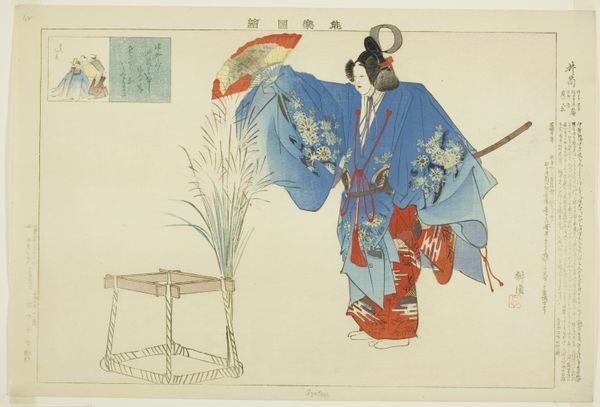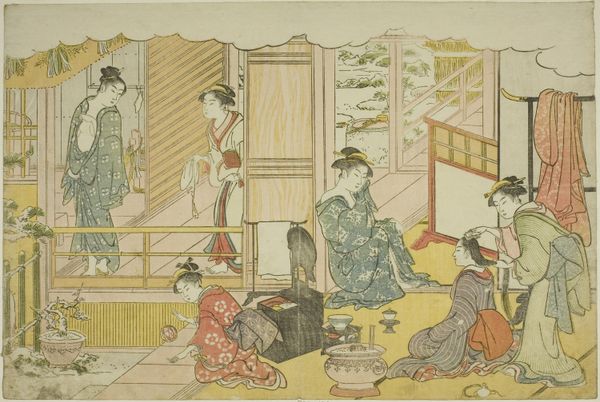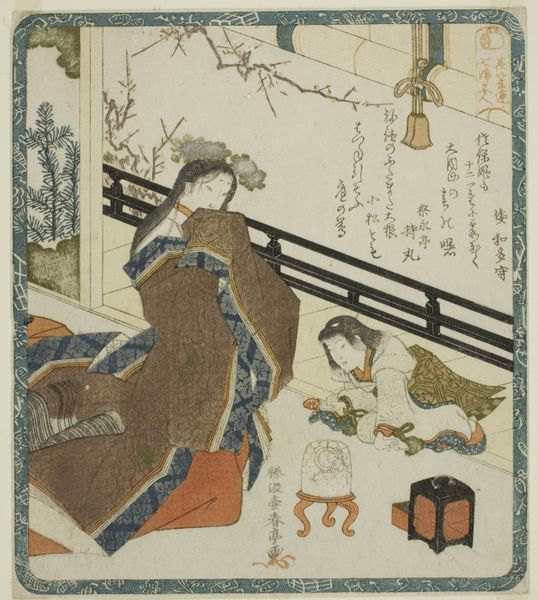
Dontaro (Kyogen), from the series "Pictures of No Performances (Nogaku Zue)" 1898
0:00
0:00
Dimensions: Approx. 25.2 × 37.4 cm (10 × 14 4/3 in.)
Copyright: Public Domain
Curator: Allow me to introduce Tsukioka Kōgyo's woodblock print, "Dontaro (Kyogen), from the series Pictures of No Performances (Nogaku Zue)", dating to 1898. Editor: My immediate reaction is one of understated elegance. The colour palette is muted, and there's a strong emphasis on line and form. The asymmetrical composition directs my gaze inward, inviting contemplation. Curator: Indeed. The composition hinges on a complex layering of symbolic meaning. Kyogen are traditional comic theater forms. Dontaro, a specific role, traditionally portrays a character of naivete, often one exploited or outwitted. His very stance here suggests an archetypal stance, one where simplicity is exposed. Editor: Interesting. Note how the woodblock technique emphasizes the materiality of the image. The flatness and clear outlines lend a distinctly two-dimensional quality, pushing against any illusionistic depth. The strategic placement of color fields is a subtle yet powerful design choice. It is interesting how those color choices might further enhance symbolic themes of Japanese society. Curator: Precisely, and that aesthetic aligns with Ukiyo-e traditions. Look at the trees—they frame the players but appear as much as a two dimensional element as something from nature. The visual grammar references the performance but only through implication. How are we supposed to view art that only implies performance through design elements such as frame and setting. Editor: I find that paradox engaging. The design implies the performance as art within an art; but that it does so through carefully orchestrated spatial relations and form elevates it beyond mere representation. It poses a fundamental question about the relationship between art and performance, presentation and perception. I really wonder at the significance of the wooden rail on the scene itself: to separate from it or guide the performance along its line. Curator: And on these lines we arrive at a point where we appreciate not merely the subject of Dontaro's role and the image of art production, but, as you put it, "art in art production." Its power stems from both that image itself and its own semiotic system that builds art upon art through cultural performance. Editor: A beautifully self-referential work!
Comments
No comments
Be the first to comment and join the conversation on the ultimate creative platform.
